The Mitsubishi EK v EX would be the cheapest EV on the market
This car is only available in Japan but Mitsubishi is thinking about bringing it to Australia. They want to know if I think Aussies would go for a 3.4m long, 1.48m wide bento box on wheels.
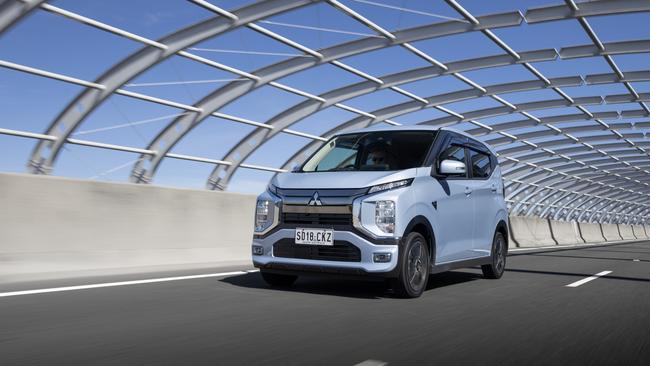
In many ways, I find Japanese culture dauntingly superior. They’ve discovered that you can avoid being fat simply by not eating too much crap, they’ve bought more than 80 per cent of our beer brands, and since 1955 they’ve had one political party running everything, pretty much constantly. Plus, their train system makes ours look like primordial sludge.
In some ways, however, they are very weird, like their deep love of “kei” cars – tiny bento boxes on wheels that you can park in a cupboard. Kei (or “crazily compact”) vehicles are cheaper to insure, and incur less tax; in some areas of Japan, they’re exempt from the rule that you have to prove you’ve got a space to park a car before you buy it.
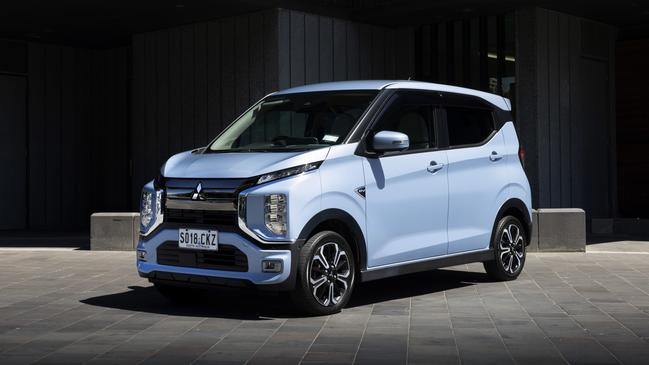
There are, of course, strict rules on their dimensions – no more than 3.4m long, 1.48m wide and 2m tall – but also on power (47kW, or slightly less than a hairdryer). They are, in essence, all the car anyone actually needs, and no more, which is very Japanese – as opposed to my western stance of very much wanting a lot more car, and fried chicken, than I need.
I have always thought of kei cars as almost tooth-achingly cute, but I’d never been allowed to drive one until Mitsubishi offered up its EK X – an all-electric, currently Japan-only vehicle that the company is thinking of putting on sale in Australia, if opinion leaders and influencers like me think it’s a good idea.
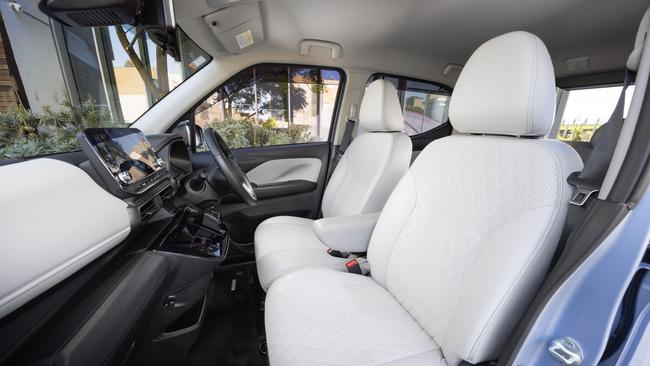
If you could buy this EK X, which really does look like a toy, at Japanese prices it would cost about $25,000. Realistically, if Mitsubishi Australia can make it work (and they admit they might well need to get EVs like this into their showrooms to help them survive under Australia’s new emissions laws, which allow companies to trade-off zero-emission cars against big, CO2-belching utes) it would cost between $30,000 and $35,000.
Which would still make the EK X the cheapest electric vehicle on the Australian market, and thus a tempting proposition when you consider that all of the other relatively bargain-priced EVs we have are made in China, a country whose car culture I find daunting, but not superior.
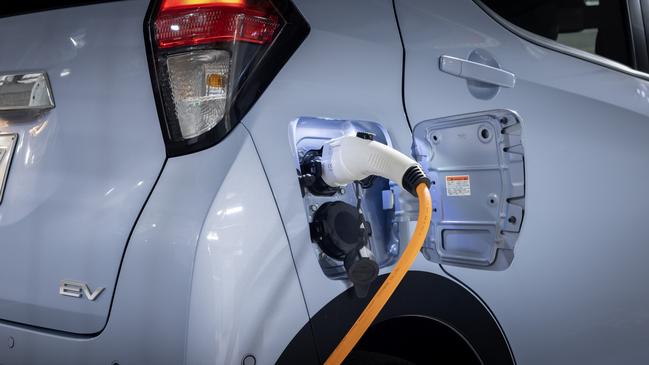
The most instantly shocking thing about this kei car is how big it feels, despite how diddly it looks (it’s smaller even than a Kia Picanto). I had to share the bench-style front seat with a Mitsubishi staffer, tasked with downloading my every thought, and we barely bashed elbows (there’s a handy armrest separator), but I was stunned when I climbed into the back seat and found it more roomy than 99 of the past 100 Ubers I’ve caught.
The two-person rear seat can be moved fore and aft a surprising amount, and if you want any kind of boot space at all you have to give up some of that legroom, but not all of it.
While the EK X feels tall (headroom is also beyond belief) and thin on the road, it does not tip over or get rolly around bends, and the ride quality on its tiny little 15-inch wheels is surprisingly good. The steering is light, but not as light as the power, which really makes this Mitsubishi unique when compared to other EVs, which all tend to offer thumping wads of torque and startling acceleration.
The Japanese have decided that kei cars should have exactly enough power, and no more, and in this case that means 47kW and 195Nm. As a consequence, it will go up hills when it’s good and ready, and it can get to 110km/h in the fullness of time. Possibly some time tomorrow.
Normally, this lack of punch would put me in a foul mood, but there’s just something joyful, playful and, yes, damnably cute about the Mitsubishi EK X. I just couldn’t get cross with it. Parking it was a particular pleasure but there’s just a general kind of fun-ness to everything about driving it.
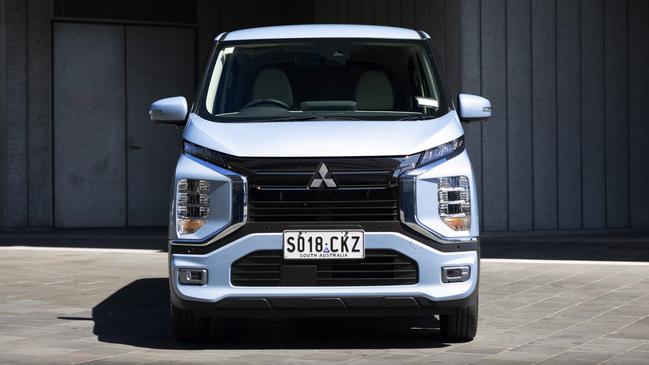
The problems such a car would have in Australia include the fact that it can only go 180km between charges (in the real world, for a city car, that’s plenty, and most people would still only charge it once or twice a week), and the safety issue. This kei car has seven airbags, autonomous emergency braking and other safety things too dull to talk about, but because of its size there’s no way it would achieve a five-star safety rating in Australia – indeed, it would probably be a three-star car – and that would lead to much beating of chests from the cautious motoring media.
The EK X does, of course, meet all Japanese safety regulations for kei cars, which are designed to be driven in cities, and rarely at speeds over 80km/h.
Personally, I think they should bring it to Australia anyway, particularly if they can get it on sale for under $35,000, because if you park it next to something ugly, like a ute, it instantly brightens your day. Like a little bonsai of a car (sigh, the Japanese even do better trees).

To join the conversation, please log in. Don't have an account? Register
Join the conversation, you are commenting as Logout